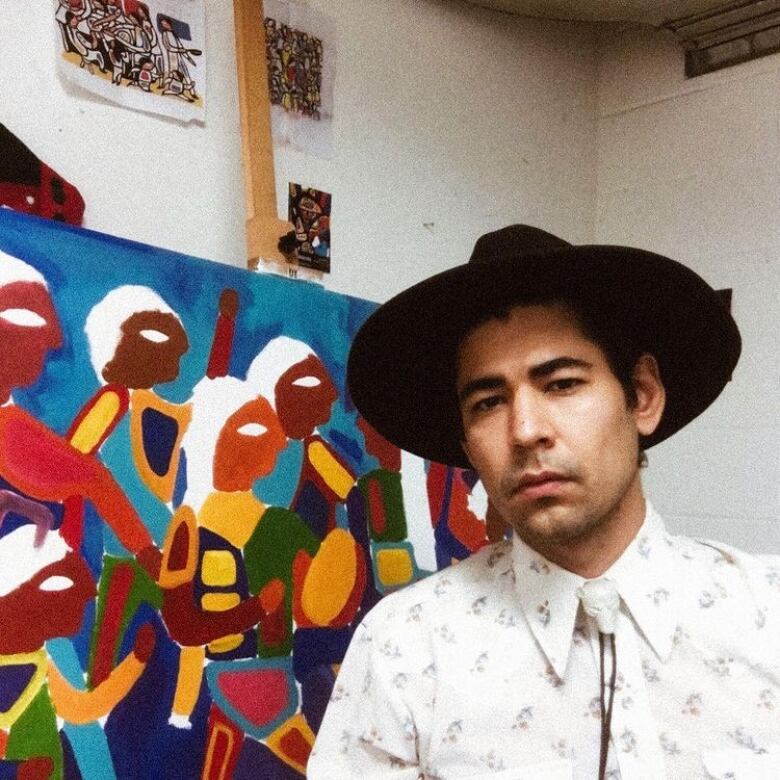Brittany Luby hopes her children’s book — which has been shortlisted for a 2021 Governor General’s Literary Award — will inspire young people to connect with their loved ones and the natural world around them.
Mii maanda ezhi-gkendmaanh: This Is How I Know, written by Luby and illustrated by Joshua Mangeshig Pawis-Steckley, tells the story of an Anishinaabe child and her grandmother, and how they explore the seasons and the natural world.
Luby is an associate professor at Ontario’s University of Guelph who specializes in the history of Indigenous Peoples. In 2020, she was the recipient of the Governor General’s History Award for Scholarly Research.
Mii maanda ezhi-gkendmaanh: This Is How I Know is on the short list for young people’s illustrated books, one of seven categories for Governor General’s Literary Awards recognizing the best English-language and French-language books.
“I would also hope that readers feel inspired to connect with their plant and animal teachers,” Luby said in an interview with CBC Kitchener-Waterloo. “I believe that the more moments we take to observe and connect with our environment, the more nurtured we feel by it.”

Luby is the great-granddaughter of Chief Kawitaskung, an Anishinaabe leader who signed the North-West Angle Treaty of 1873. According to Luby, her great-grandfather was sent to the Cecilia Jeffrey Indian Residential school in Kenora, Ont., and that since then, paternal generations were mostly raised in English.
The book is written in English and translated in Anishinaabemowin by Alvin Ted Corbiere and Alan Corbiere, who are Anishinaabe and from M’Chigeeng First Nation.
Luby said making the book available in the two languages is an important part in healing.
“I transition between a confident writer in English to a baby in Anishinaabemowin,” Luby said.
“I really hope that by creating bilingual resources with the support of incredible linguists, like the Corbieres, that my children and my children’s children will have a much easier time learning how to speak Anishinaabemowin, learning how to speak like members in our community speak.”
Using lived experiences as inspiration
Pawis-Steckley is an Ojibway multidisciplinary artist from Ontario whose family is from Wasauksing First Nation.

He said his own personal experiences with family and his grandmother formed the basis of his inspiration for the illustrations in the book. He hopes non-Indigenous children learn the importance of reciprocity relationships between youth and elders.
“I feel like a very important relationship or dynamic within a culture for instance is having elders take care of the youth, and the youth taking care of the elders as well, or learning from the elders.”
Pawis-Steckley said recognizing the book as a finalist for one of the Governor General Awards helps Indigenous talent become more recognized on a national scale.
“I feel like it’s just so important for Indigenous youth to see these sorts of books come out. For them to be able to see themselves within the books, to see them being represented … just [to] have that recognized was important for Indigenous youth.”
A 1996 report by the Royal Commission on Aboriginal Peoples found that after the 1913 death of Canadian poet Pauline Johnson, who was of mixed Mohawk and European descent, almost six decades passed before another Indigenous author would be published in Canada.

Additionally, the report found, the majority of the books about Indigenous people marketed each year by major Canadian publishers were written by non-Indigenous authors, and Indigenous publishers reported difficulty securing support from government agencies that support publishing.
Luby said the creation of the book was filled with Anishinaabe talent through copy editing, translating, illustrating and writing, and she hopes more room is made in the industry for similar Indigenous-led publishing projects.
“I really feel that this creation is just helping to clear a wider trail for the next generation,” Luby said.
“I’d really like to see more Indigenous presence throughout the whole publishing industry … just to kind of see if we can expand even a little bit further beyond the book and kind of incorporate Indigenous voices throughout the entire lifecycle.”
Winners to be announced Nov. 17
The prizes, administered by the Canada Council for the Arts, are awarded in seven English-language categories: fiction, non-fiction, poetry, young people’s literature — text, young people’s literature — illustration, drama and translation. Seven French-language awards are also given out in the same categories.
All the books shortlisted in the category for young people’s illustrated book are:
- Mii maanda ezhi-gkendmaanh: This Is How I Know.
- On The Trapline.
- Out Into the Big Wide Lake.
- The Library Bus.
- The Wind and the Trees.
Finalists in all categories will be announced Nov. 17.





More Stories
Apocalypse now: Why movie and TV fans love the end of the world | CBC News
I Don’t Know Who You Are is a visceral race against time for a critical drug | CBC News
From pop to politics, what to know as Sweden prepares for the 2024 Eurovision Song Contest